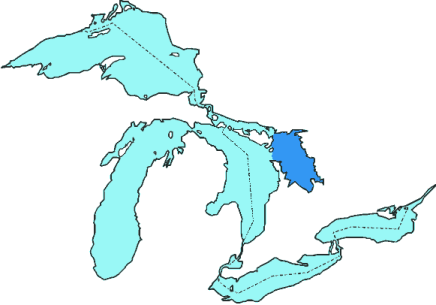Georgian Bay
It was named "Georgian Bay" (after King George IV) by Captain Henry W. Bayfield of the Royal Navy in 1822.
Archeological records reveal an Aboriginal presence in the southern regions of the Canadian Shield dating from 11,000 years ago. The first European to visit this area was likely the 18 year old teenage interpreter trainee Étienne Brûlé, arrived circa 1610. Hudson Bay followed and by 1662 the vast wilderness was open for trade.

The Bay is known as the sixth Great Lake; it is so large that it creates its own weather from calm to diabolical.
The Trent-Severn Waterway
The only one it's kind in North America, Big Chute Marine Railway, transports boats in a giant carriage up and over a 19 metre height of land between the Gloucester Pool and the Upper Severn River. The Parks Canada, Trent-Severn Waterway meandering a 386 km (240 miles) navigation corridor which includes over 4,500 km (2,796 miles) of shoreline and over 500 square kilometers (310 square miles) of water along central Ontario provides a passageway through 44 locks so magnificent it has been named "one of the finest interconnected systems of navigation in the world". 150,000 vessels used the Trent-Severn in 2007.
The system also includes 39 swing bridges and 160 dams and control structures that manage the water levels for flood control and navigation on lakes and rivers that drain approximately 18,600 square kilometres of central Ontario's cottage country region, across four counties and three single-tier cities, an area that is home to more than a million Canadians. There are 18 hydroelectric generating facilities located along its route providing power to more than 125,000 private and commercial properties which ajoin onto the navigation corridor of the Trent-Severn Waterway.